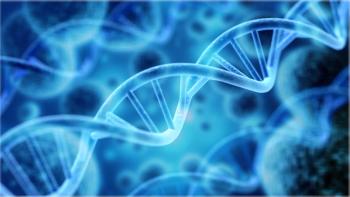
High-throughput proteomic research has been hampered by the limited peak capacity of one-dimensional liquid chromatography (1D-LC) separation performance.


High-throughput proteomic research has been hampered by the limited peak capacity of one-dimensional liquid chromatography (1D-LC) separation performance.

A water-resistant, highly adsorptive molecularly imprinted polymer was developed to address the issues of unstable adsorption performance and high organic solvent consumption in traditional materials.

Although closantel (CLO) is well-regarded as a curative antiparasitic drug, even low doses have been found to cause serious side effects in the human retina and central nervous system.

Examining the role that LC–MS/MS plays in metabolomics, and metabolomics’ growing importance in the field of disease biology.

Researchers have developed a robust method utilizing high-performance liquid chromatography–tandem mass spectrometry (HPLC–MS/MS) to accurately quantify amino acids in plasma, making it a valuable tool for clinical diagnostics and research in amino acid metabolism.

Levoglucosan, which is emitted from the combustion of cellulose and hemicelluloses, can be transported over a long range of time to ice caps, where it may indicate fire activity both regionally and globally.

Researchers have developed an ultrahigh-pressure liquid chromatography (UHPLC)—tandem mass spectrometry (MS/MS) method for the simultaneous determination of 10 aminoglycoside antibiotics in aquatic products.

Researchers have introduced MCnebula, a new framework for untargeted LC–MS/MS data analysis. MCnebula focuses on critical chemical classes and utilizes visualization techniques to streamline the analysis process, enabling efficient pathway analysis, biomarker discovery, and classification of unknown compounds beyond the limits of spectral libraries.

In a lecture at HPLC 2023, Valérie Pichon of ESPCI Paris and Sorbonne University said these advances address limitations of more traditional extraction techniques.

In a presentation at HPLC 2023, Kevin Pagel of Freie Universität in Berlin, Germany described methods he has found most effective for better understanding the roles of glycans and glycoconjugates in biological processes.

At HPLC 2023, Paola Dugo held a lecture on how combining two-dimensional liquid chromatography (LC×LC) with mass spectrometry (MS) can help scientists analyze food samples.

At HPLC 2023, Erin Baker held a lecture on how using liquid chromatography and mass spectrometry together can help scientists further understand diseases that can arise from chemical exposure.

At HPLC 2023, Hyukju Kwon hosted a lecture on the roles LC–MS and artificial intelligence can have in autonomous material discovery.

At HPLC 2023, Oliver Fiehn of the University of California explained results gathered from a device that can be used during daily digestion.

An ultrahigh-pressure liquid chromatography–tandem mass spectrometry method (UHPLC–MS/MS) using polarity switching, preceded by solid-phase extraction (SPE), was used to quantify eight ultraviolet filter (UVF) compounds in chlorinated outdoor pools in Winnipeg.

Fresh garlic and aged garlic, both brown and black, were all analyzed for their bioactives, in an attempt to expand those compounds’ applications as food ingredients and dietary supplements.

Scientists have developed a breakthrough MDLC–MS method for in-depth characterization of charge variants in therapeutic antibodies. The innovative approach enables the detection and evaluation of rare charge variants, facilitating improved safety and efficacy in antibody development.

Organic acids, flavonoids, iridoids, and saponins were among the compounds discovered, with significant α-glucosidase inhibitory behavior in vitro that was inconsistent with substance content level.

New research emphasize the importance of identifying metabolite interference in LC–MS targeted metabolomics analysis to ensure accurate results. The study highlights the need for thorough investigation and resolution of metabolite interferences for reliable metabolite measurement in targeted metabolomics.

A research team has developed a fast and sensitive method using UHPLC–MS/MS to simultaneously detect the nematicide fluensulfone (FSF) and its two major metabolites in different agricultural soils, providing valuable insights into the environmental behavior of FSF in soil systems.

A simultaneous, single-run analysis was sought for metabolites of the central carbon metabolism pathway, which is closely related to the occurrence and development of most diseases in humans.

The development of a newly-designed Girard's reagent, HBP, as charged isobaric mass tags has enabled selective capture and sensitive detection of aldehyde metabolites. The LC–dNLS-MS/MS screening approach using this reagent has successfully facilitated the discovery of natural aldehydes and their profiling in complex samples.

Researchers have developed an innovative strategy for compound annotation in offline 2D-LC–MS analysis. The approach combines hand-in-hand alignment with targeted molecular networking (TMN) and was successfully applied to analyze the chemical profile of Yupingfeng (YPF), a traditional Chinese medicine prescription, resulting in the identification of 497 compounds and demonstrating its efficiency and scalability in complex sample analysis.

Nails were evaluated for their suitability as non-invasive biomarkers for exposure to antibiotics, even those that are commonly prescribed.

A new method for monitoring tricyclic antidepressants (TCA) in biological fluids and tissues in real time was proposed for the purposes of improving their effects or determining causes of death.